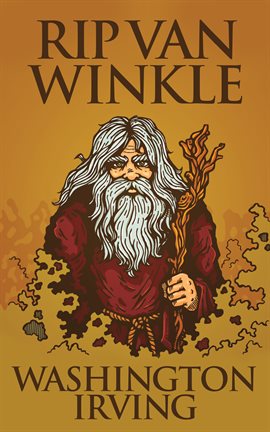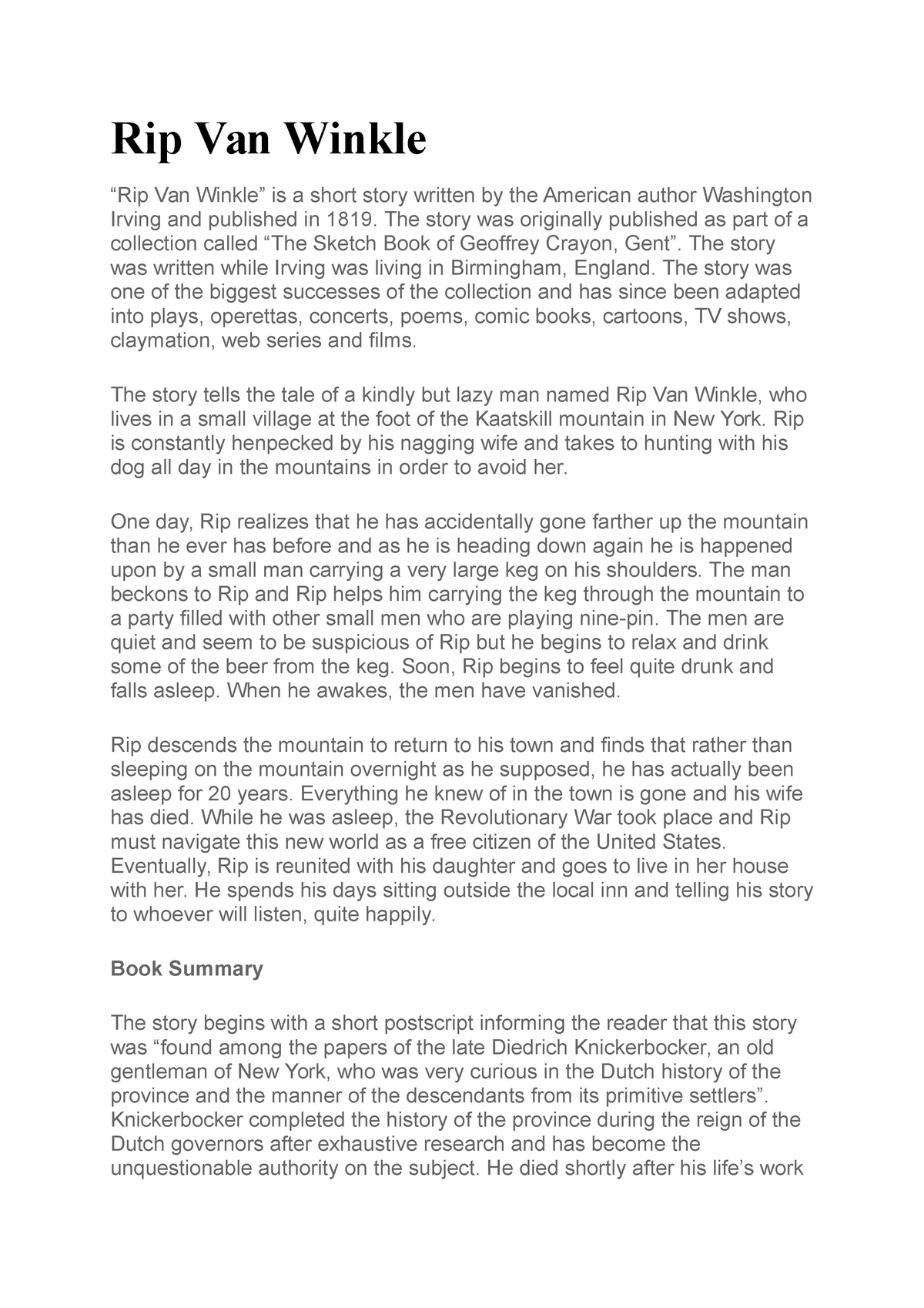

Much of these techniques are tied into Irving’s Romanticist ambitions-he sought to emphasize individuality and n ature in a country that was increasingly valuing communality and industry. Though Irving’s mythology is borrowed, the work represents a significant departure from its American predecessors by employing less formal and even vernacular language as well as emphasizing nature, magic, and other irrational forces. The story appeared in a book (called The Sketchbook of Geoffrey Crayon, Gent.)alongside Irving’s other very famous short story, “The Legend of Sleepy Hollow,” which displays a similar interest in mystical happenings and forces of nature. “Rip Van Winkle” borrows much of its content from Dutch folklore and other mythologies.

He continued writing and keeping up with correspondence until his death in 1859. Later in his life he moved back to Tarrytown New York, and lived on an estate he named “Sunnyside.” He left this estate to serve as the US ambassador to Spain for four years before returning. He spent 17 years living in Europe (primarily Britain and Spain) and was well regarded abroad. His writing eventually earned him fame and status, and he was one of the first American authors whose writings received international recognition. Irving studied law before becoming interested in historical writing and short fiction. He is most famous for his short stories “Rip Van Winkle” and “The Legend of Sleepy Hollow.” Irving was born in New York and was named after General George Washington (who hadn’t yet been elected President at the time of Irving’s birth, as the Constitution had not been either written or ratified by 1783).

Washington Irving was a fiction writer, biographer, historian, essayist and US ambassador who worked during the first half of the 19th century.


 0 kommentar(er)
0 kommentar(er)
